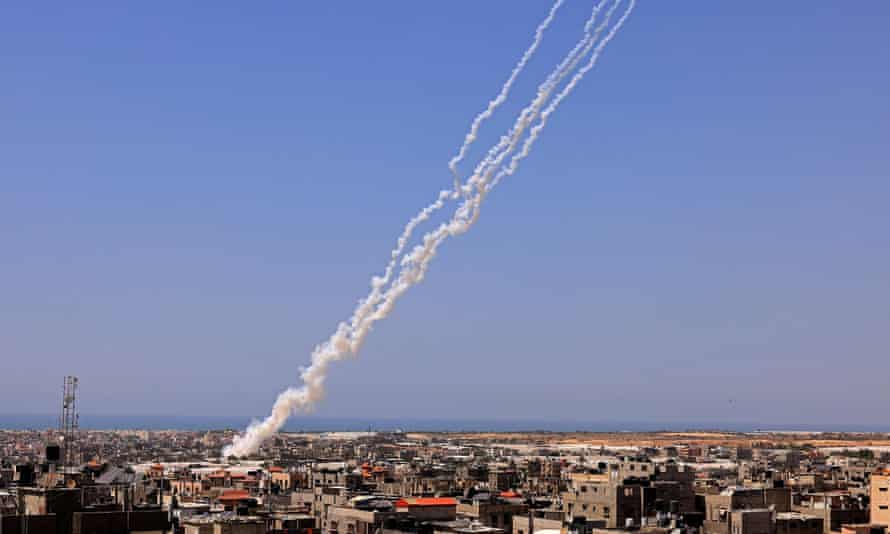From the early rocket systems to labour-intensive attack tunnels and incendiary balloons, the efforts were crude. Even when the rockets became more sophisticated by the time of the 2014 conflict, flying further and with bigger warheads, most of them were shot out of the sky.
Instead, Hamas’s key military attribute appeared to be its resilience under attack when Israeli tanks went in.
This time, however, something has changed. In the opening hours of the current fighting, the armed groups in Gaza have appeared more effective and far more determined.
They have issued ultimatums to Israel and then fired huge barrages of missiles in an effort to overwhelm Israel’s vaunted Iron Dome anti-missile defence system – which typically intercepts between 85% and 95% of rockets – causing injuries and deaths.
This has led some to wonder whether Hamas has understood the limitationsof Iron Dome.
Above all so far, it is the optics that have been most devastating. After the years of Israeli operations against Gaza, with its blockaded population, grinding poverty and intermittent war, the signal from Hamas to Israel is that it is not only still there but perhaps more dangerous than ever.
The scale of the latest Gaza missile launches suggests the Israeli military and intelligence services have been caught napping. During the 2014 Gaza war, rockets out of the coastal enclave during the entire 50-day conflict numbered approximately 4,000, with the highest daily number about 200.
At present, rockets from Gaza are numbering much higher, including two occasions when more than 100 rockets have been fired in a handful of minutes.
What seems clear is that since 2014 – the last major conflict in Gaza – Hamas and the other armed groups in the coastal enclave have quietly rebuilt their missile arsenals on a larger scale than had been understood.
Last year, in an unusual move, Hamas shared details of its weapons procurement with an Al Jazeera programme whose main aim appeared to be to demonstrate how efforts by Israel and Egypt, on Gaza’s southern border, had not prevented it from rebuilding its arsenals, it is assumed with help from Syria and Iran.
It is a boast, however, that may come back to haunt Hamas and Islamic Jihad.
The relative success – from Hamas’s point of view – of its recent tactics, which have the appearance of having long been in preparation, are certain to challenge the Israeli political and security establishment to deal with a threat made suddenly very real.
While the Israeli military has been bombing launch sites, not least in northern Gaza, and targeting key figures, the evidence of past Gaza conflicts suggests this is rarely very effective.
Previously this has led Israel to launch large-scale ground incursions with tanks into Gaza, efforts that have always stuttered to a halt in the face of growing international outrage and attempts at mediation.
Significant this time, perhaps, is that among the other weapons acquired by Hamas have been supplies of highly accurate Kornet anti-tank missiles, the same system that was used with much effect by Hezbollah against Israeli tanks in the second Lebanon war in 2006.
One of these missiles was used on Sunday to target an Israeli car close to the Gaza border. A second was fired early on Wednesday at a 4×4 vehicle, killing one occupant and seriously injuring two others. It delivered a clear message about what Israeli troops entering Gaza might face.
All of which contributes to a highly dangerous dynamic in which even if Hamas wanted to negotiate an end to the violence as some, including Ismail Haniyeh, the head of Hamas’s political bureau, are suggesting, political pressure in Israel could work against it.

